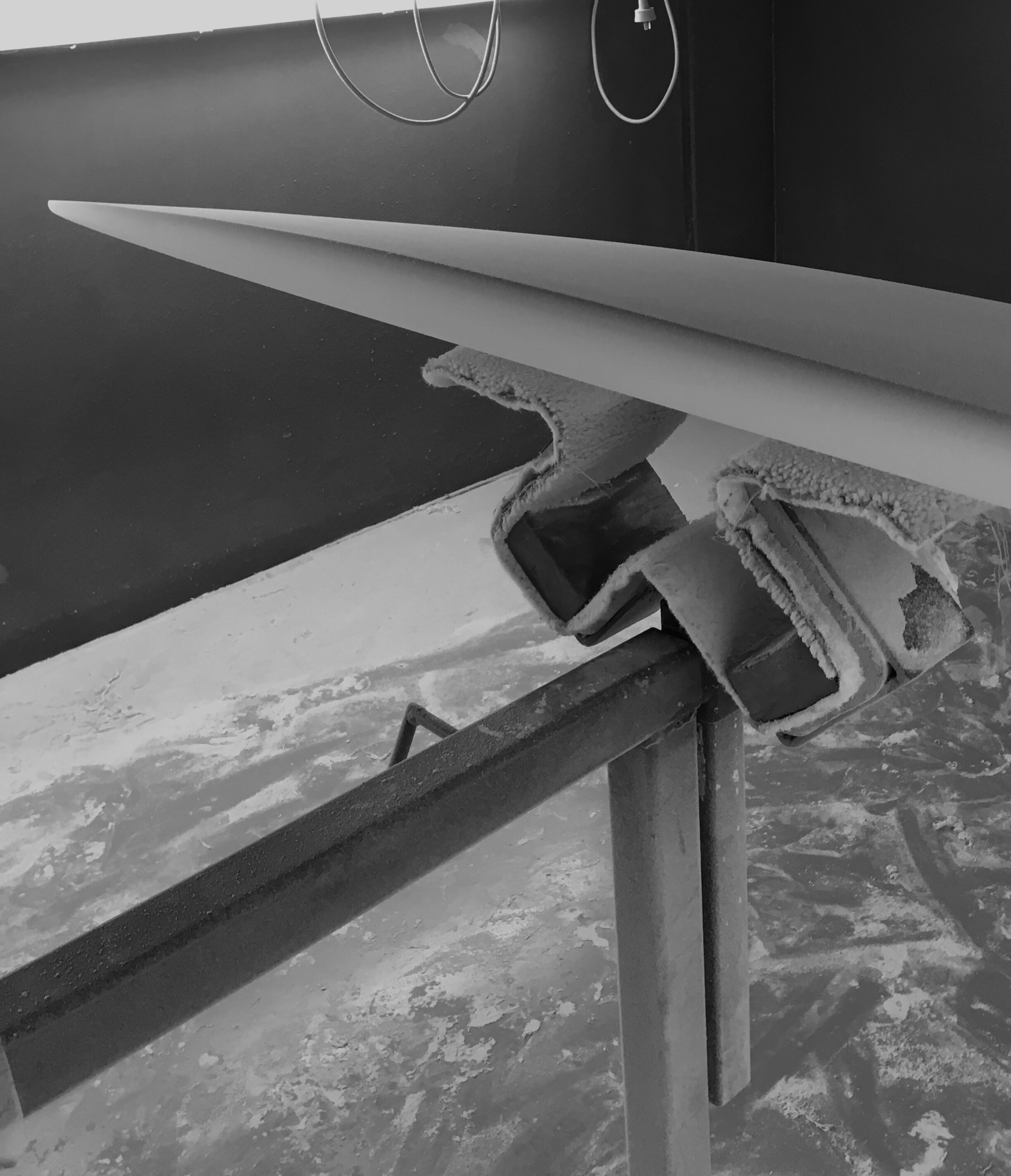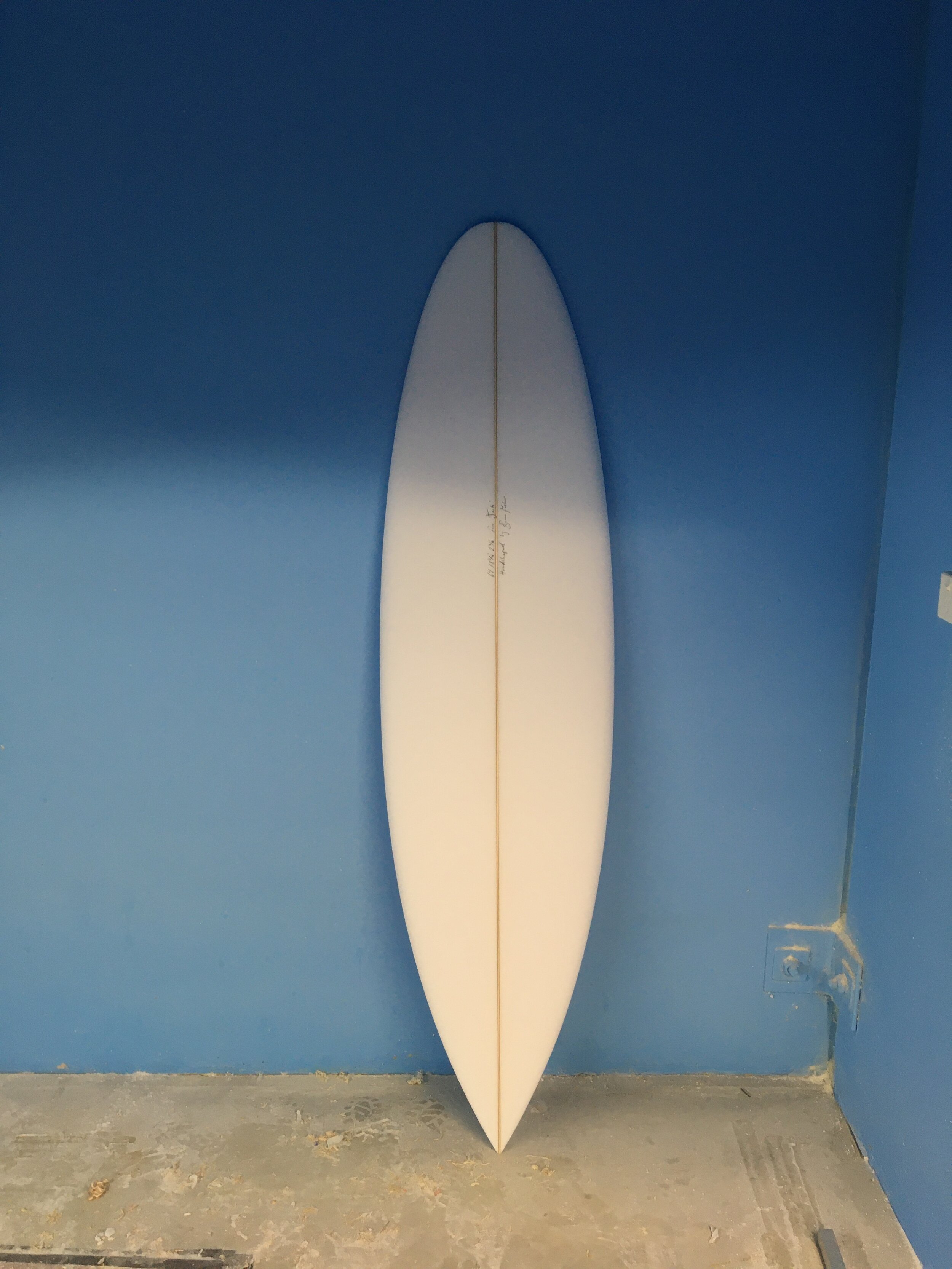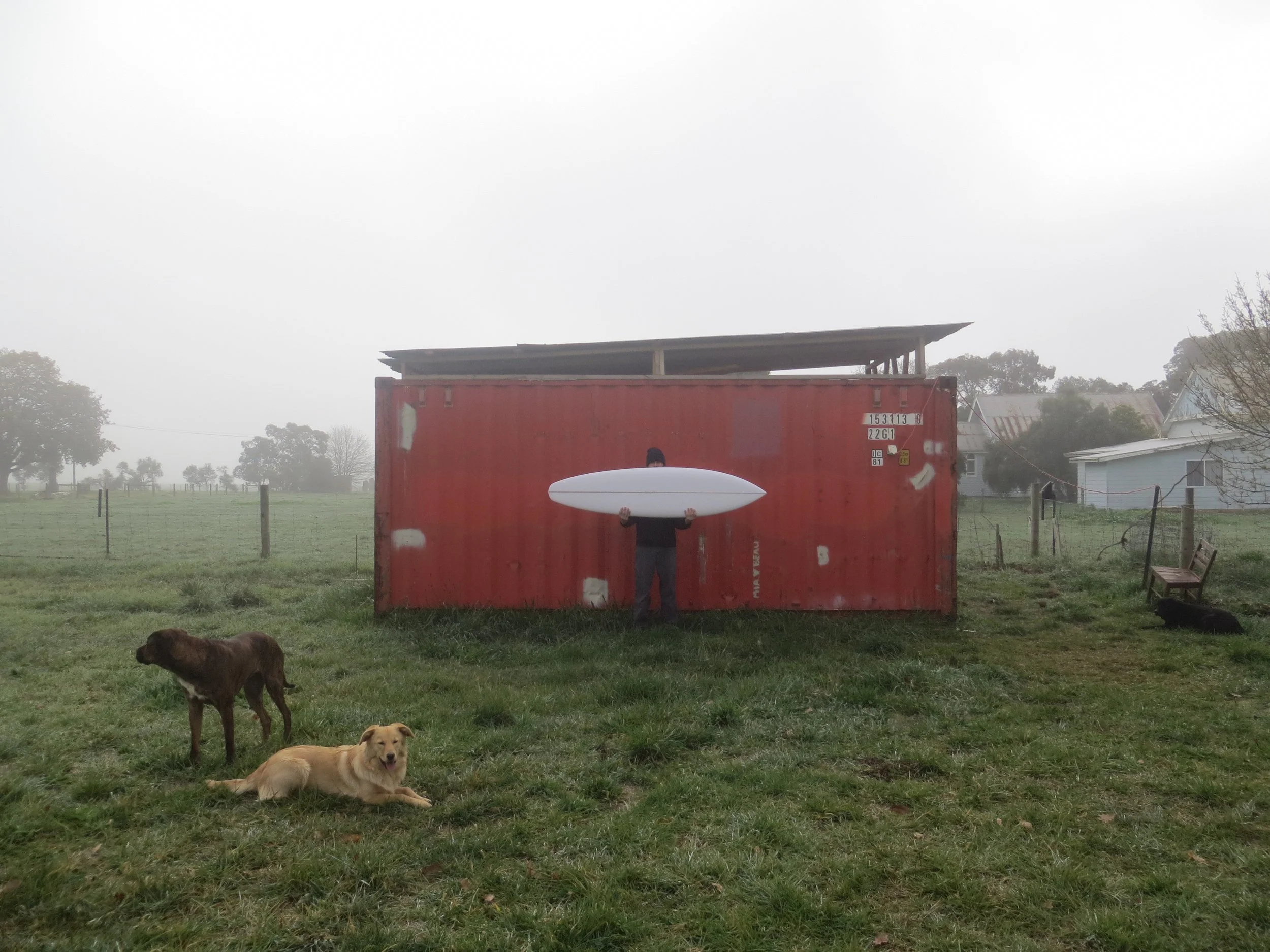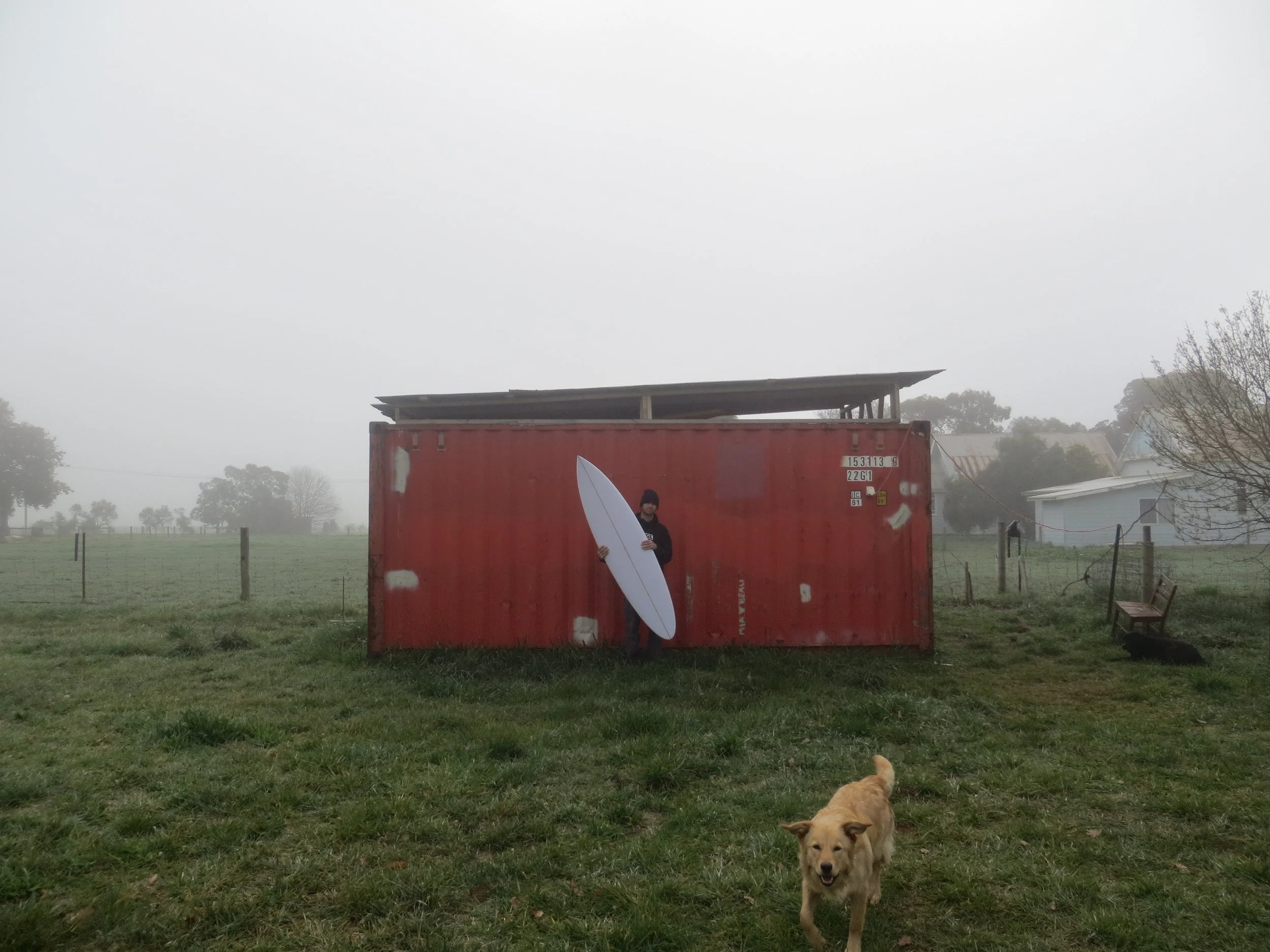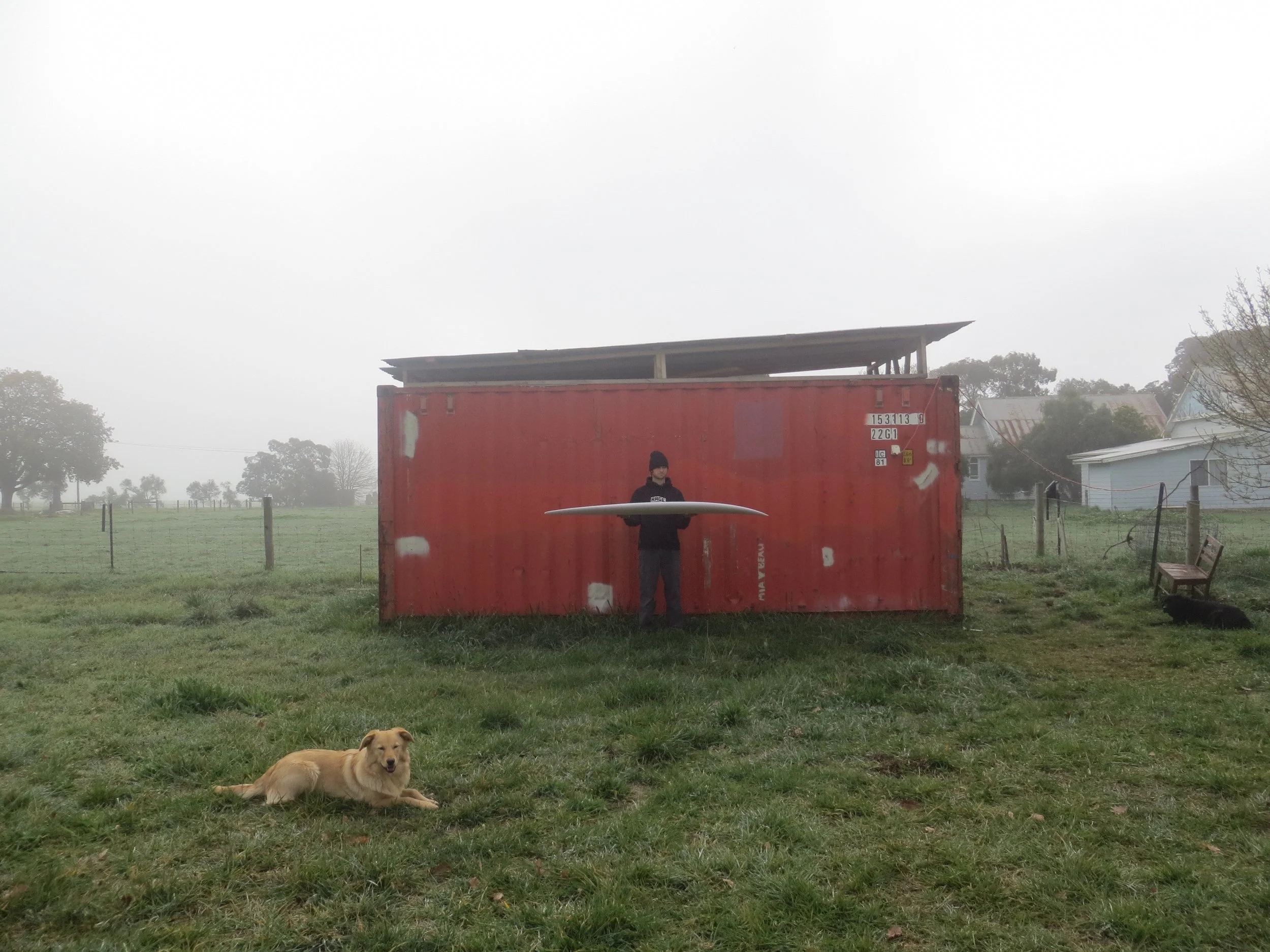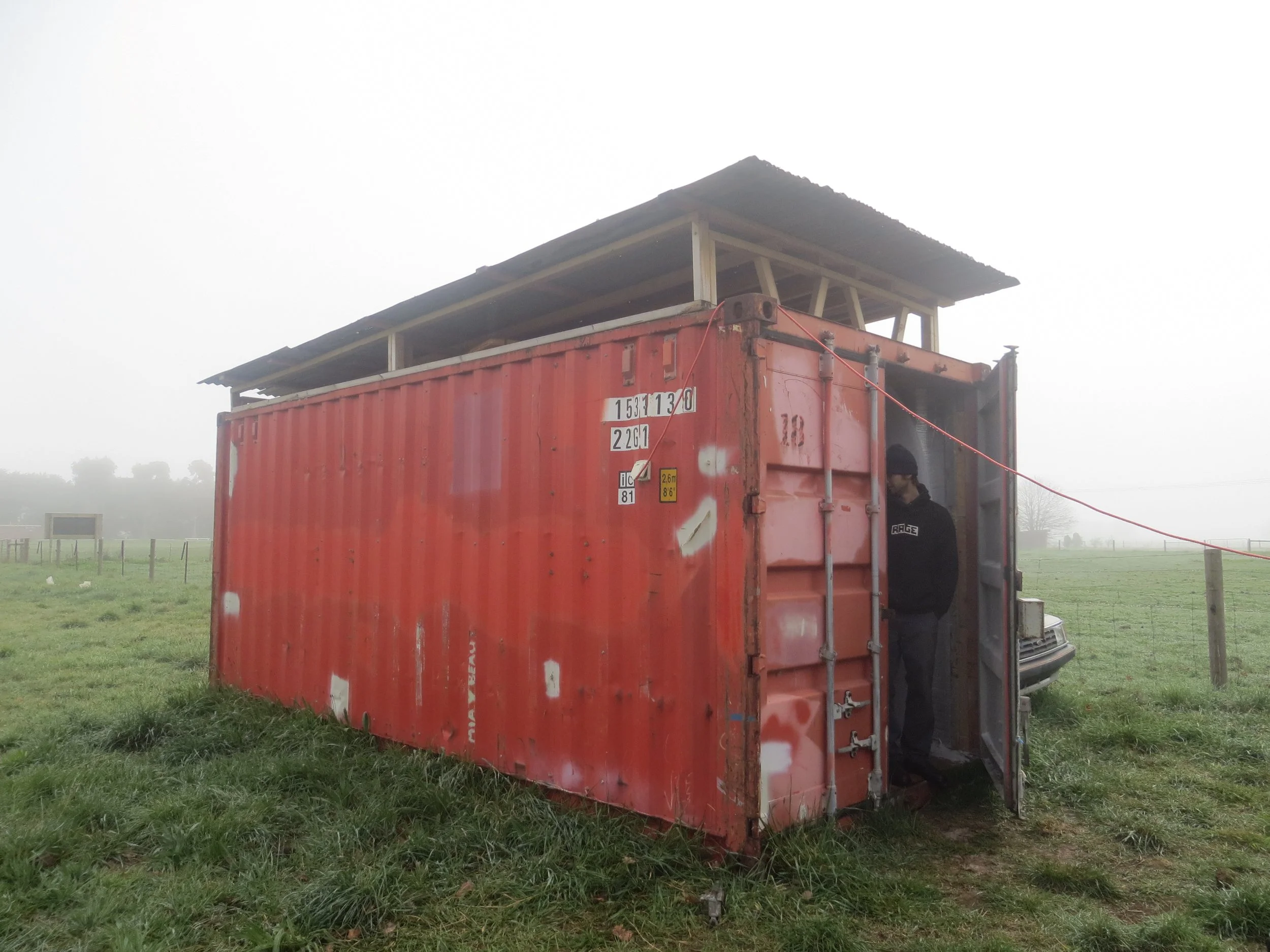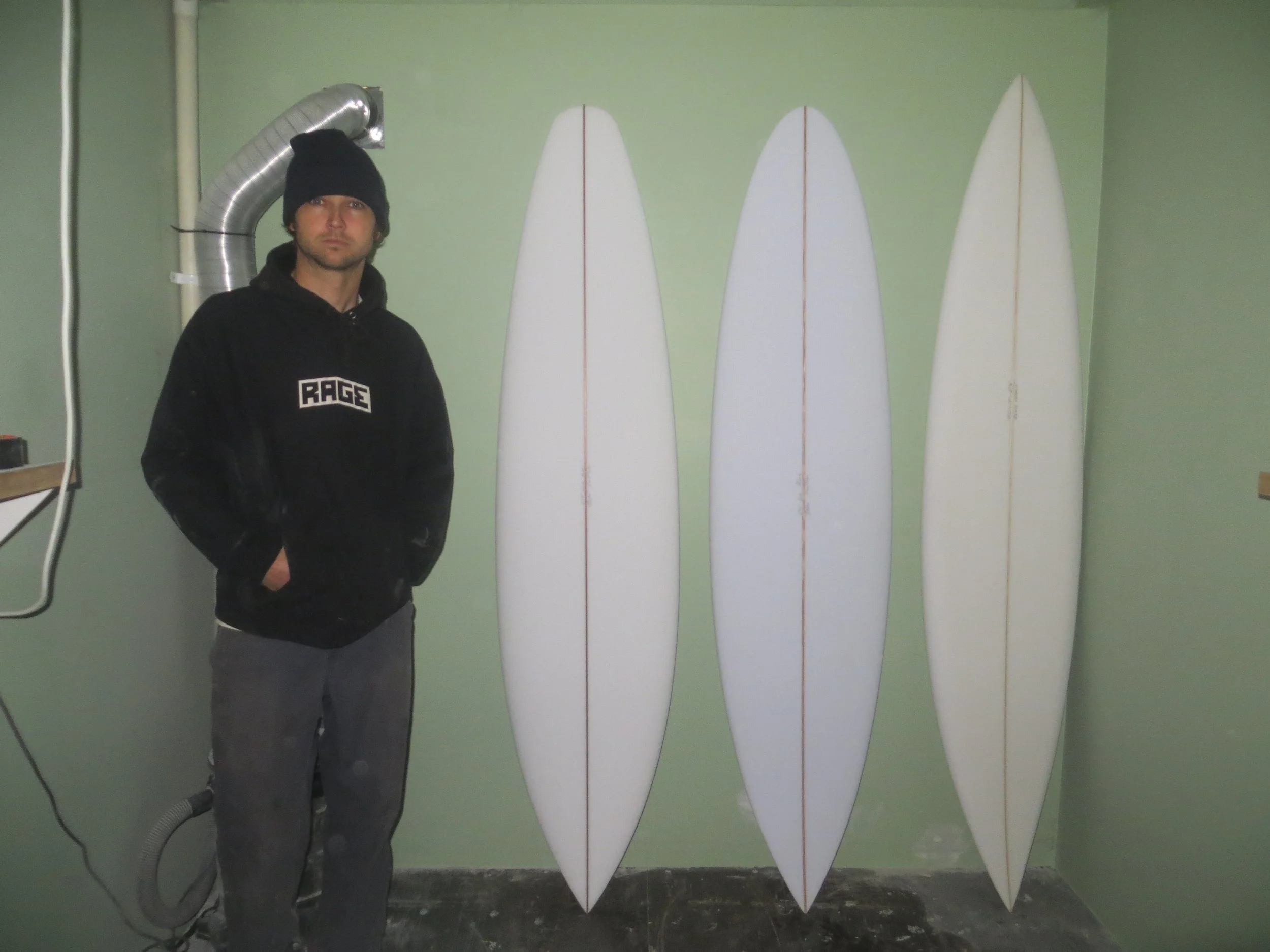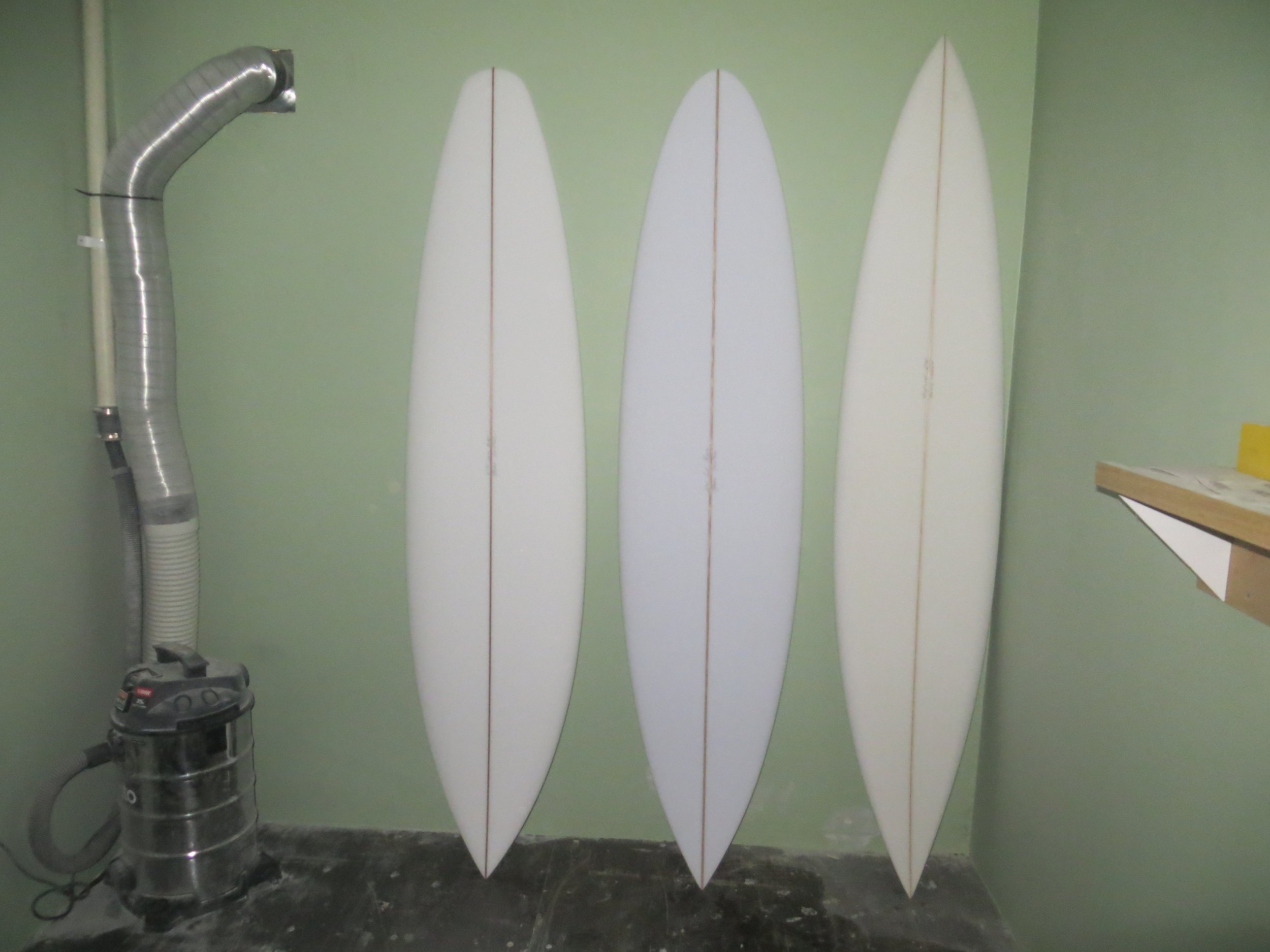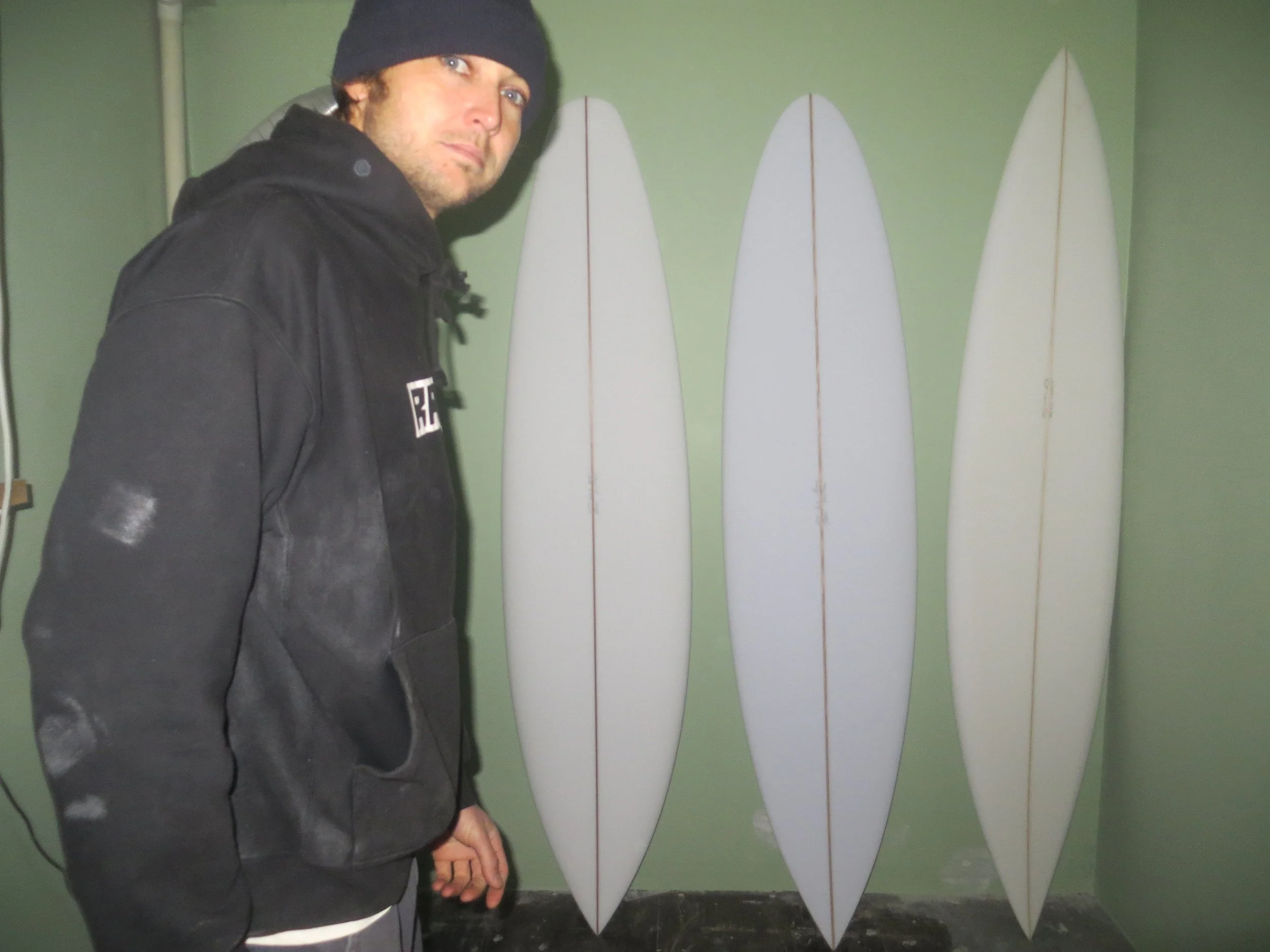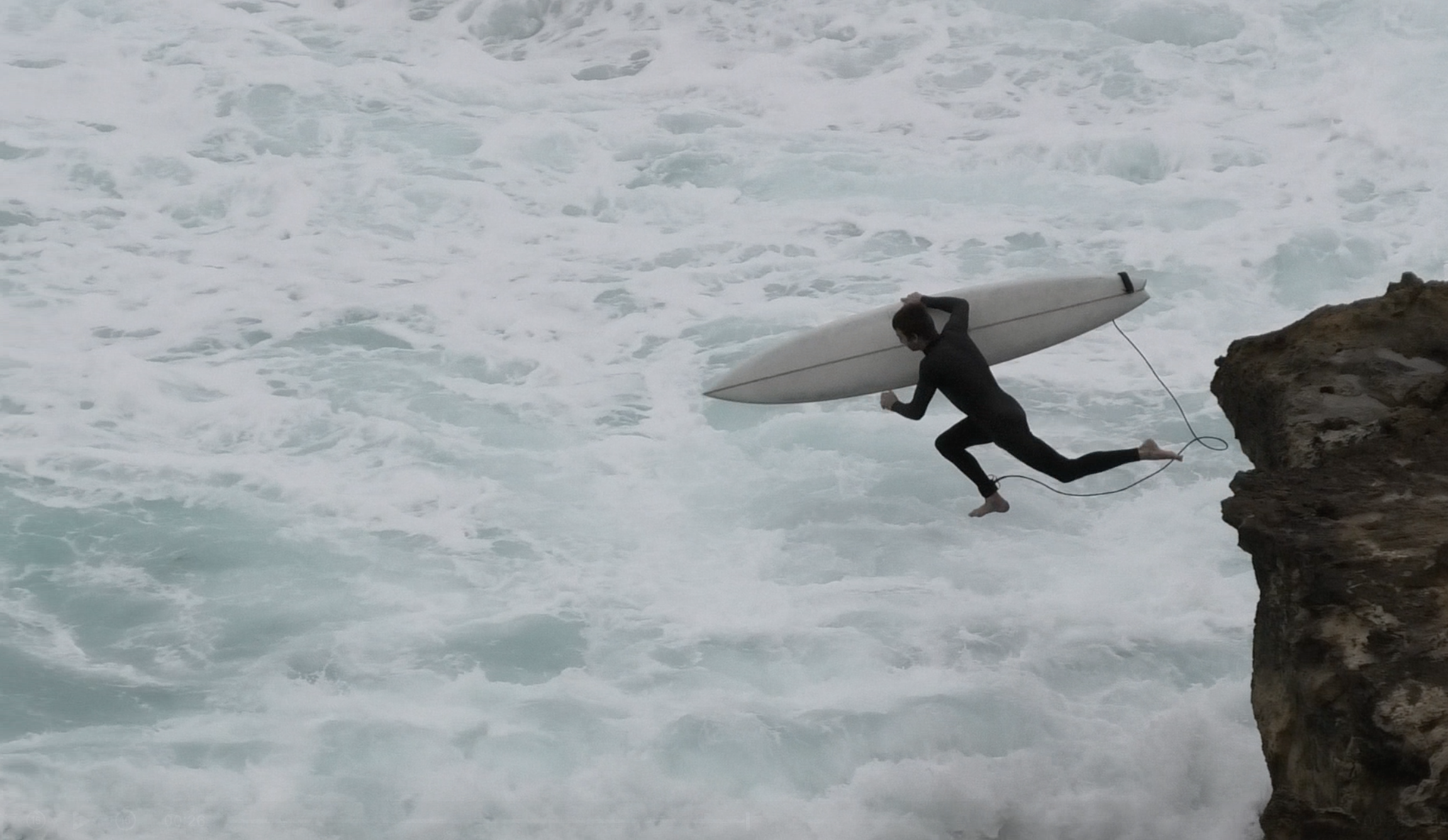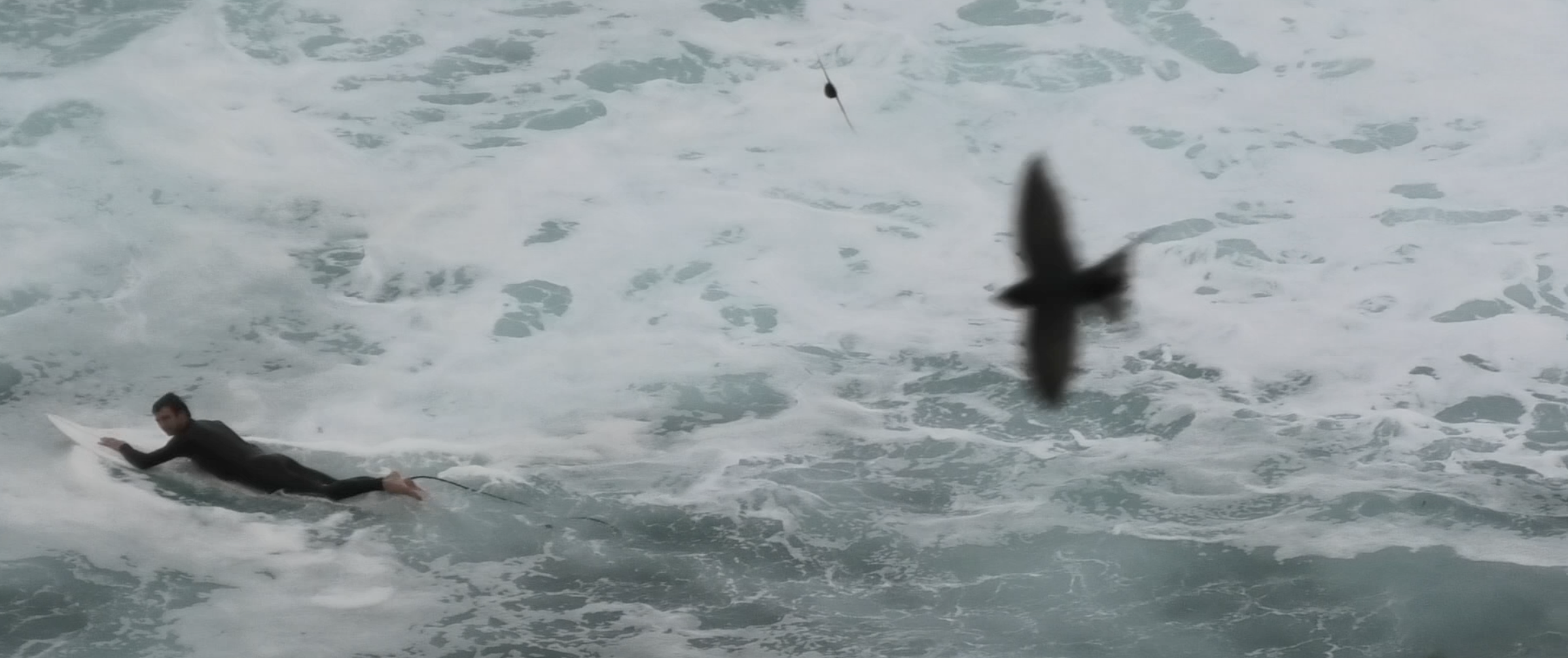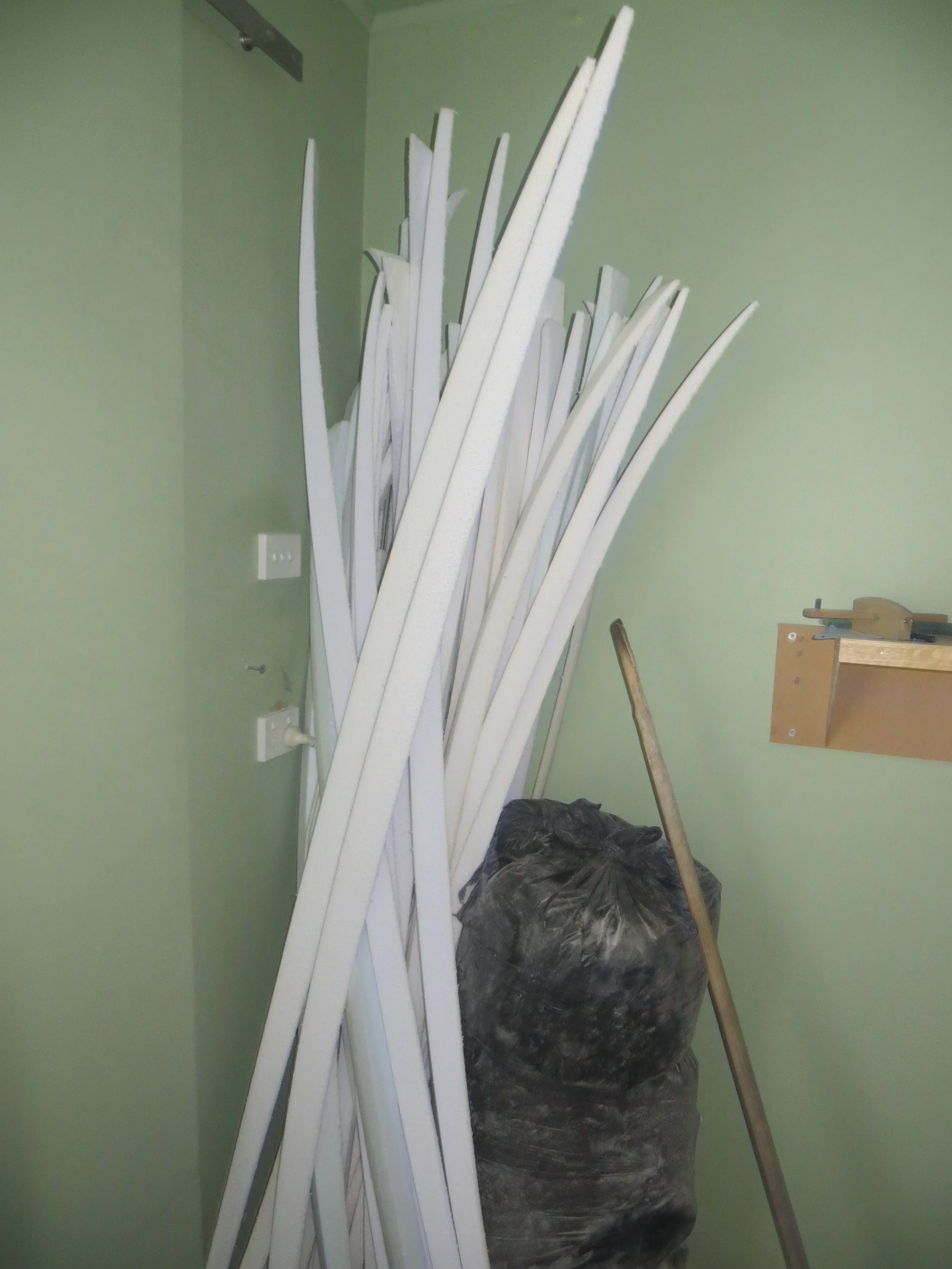
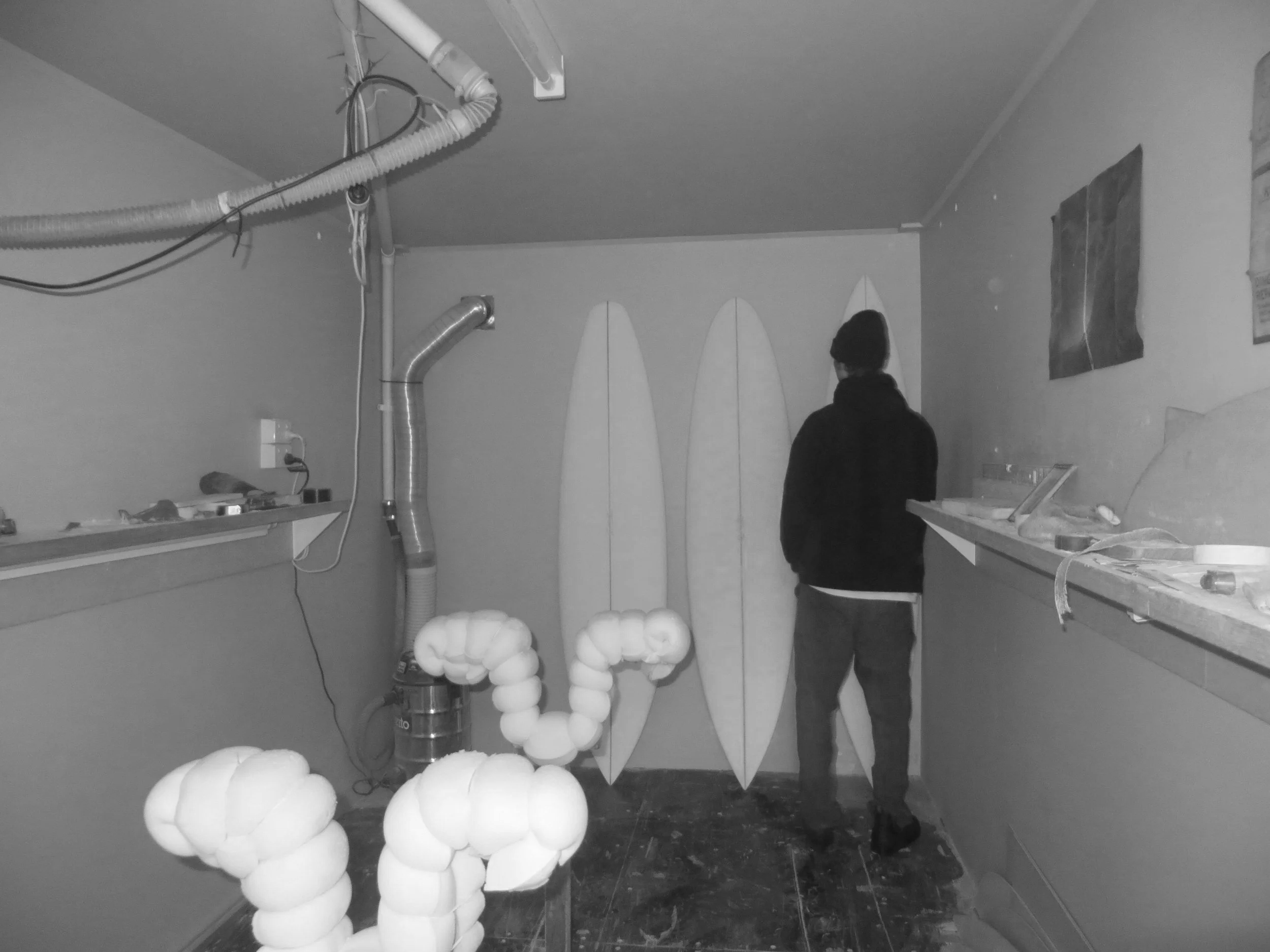
NOAH SMITH AKA NOG riding the beau shortboard AVOCA BEACH 2024
A collection of boards made in Japan, for DEUS ASAKUSA, JAPAN. 2022
All images reserved to DEUS Japan 2022
To seek, is to improve.
The experiences gained from surfing will alter any perspective, a feeling of surety stems from connection and concentration. Riding along on a wave offers a reason to be & to move with the ocean with skill or not has enlightened people for centuries. Surfing offers a certain freedom, without monetary worth. With this, we immerse ourselves in it, and do anything in our will to be among it, and sometimes all we want is to be humbled by its force. It’s of passion that one prioritises surfing, and its the nuances of it that we devote ourselves too.
In history surfing relies on folklore and diary notes, certain people who were among it, possibly for only a moment. Surf design philosophises came from opportunist engineers in practical pursuits; boat builder sailors, carpenters, ex army engineers, progressing new designs to meet their needs. Alike artists they respected the past, and tried to note and push forward personally the craftsmanship, a metacognitive process. The modern day surfer should be troubled by surfings history, for the measure of information instilled in the design they carry can not be quantified. Beginners generally don’t quest to know any origin, and there are many reasons for this, which they can’t be blamed for. To contradict this, is to acknowledge the liberty surfing offers, which takes responsibility out of the moment. To have knowledge of something is to have no ignorance, no ego, to take account, surfing is what you take from it, it’s vulnerable, but board design is less subjective.
George Greenough makes board building sound simple, but when I first observed George in his element describing his craft, there was nothing simple about it. I think his eye is far less bothered with something the size of a surfboard after working on boats.
George speaks about things like they’re taught in primary school, the perceptive way, for instance, he will say just look at a fish for example or take note of the way a dolphin rides a wave, assured that they’re the pinnacle of wave riders in the ocean. When I think about Georges words, the way he dismantles the technical aspect of a surfboard, generally the boards that have worked for me have been the simplest surfboards. When I use simple to describe them, it is not to discredit them, for in a way the most subtle intentionally, the more technical overall. It is the fact I was conditioned by modern surfboards that I spell simple out on something that has derived from years of the opportunist engineer, taking the risks, to fail, to return to the drawing board to understand this. To persist with an idea to the lengths of George, takes that extra thought, something that can’t be taught. It’s a motive to progress design, a moment that scurries a mind in order to fulfil ones pursuit. George continues to push the limits with his acute sense for design, his works, responsible for the shortboard evolution, continue to evolve and re birth. There are different techniques to skinning a surfboard. Georges take a hose and scalpel. His theories are all logical, and ethical. His life is one built around the sea, and his designs are built to his expectation of comfortability, convenience and performance. It is so effortlessly that George constructs his theories, and he holds no doubt in them.
Michael Peterson had a specific influence on me, and my surfing undoubtedly. At 13 I knew of Michael as a prolific surfer of the 1970’s. Of any surfing history my brothers gave me it was of MP. Most know him as a mystique unbeaten Australian champion, who honed surf design to his own extremes. Michael had a different design approach, to that of George, but were both in search of improving their craft to enhance their experiences. It’s interesting analysing the two, who were so different in act, but had close, the same principle. My perception of Michael was that he had an assertive nature, a cognitive intuition, who felt things, had a natural instinct in the water, could connect the dots through his hands to his feet, to his board, where he glided and turned smoothly, with all the control of a bird in flight. Michael found what worked for him and progressed rapidly. Design principles were passed down to him through Joe Larkin. Joe, a pioneer of surfboard building, from hardwood 16footers to 8ft balsa boards welcomed the apprentice, shop kid Michael Peterson, who with the will to surf in the wave instead on top of it, cut him self down a 5ft stubbie. Michael learnt the craft at an early age, and through the period of ten years, developed his surfing to a stage no one could touch. He was sure and specific, didn’t take influence, looked straight ahead, and drove fast in life.
I drove as fast as I could away from my naive years as a surfer, I wanted the education I wasn’t handed. I met Ellis Ericson, when I was seventeen, he was after this library then. I viewed Ellis from the sideline, watching his progression, in what you would call a regression in performance. He was levelling himself to the past.
Ellis began shaping surfboards through this time, his father, Bruce, a shaper, passed down the skills too Ellis to set him on his way. Bruce, a very precise man, logical and acute, guided his son to what some would call enlightenment. It was a gift. I came to know Ellis over time, & we would talk in passing. After a while, we became really close mates, and would talk about the practicalities of everything.
By the time I was twenty modern/contemporary surfboards, had killed my enjoyment. In fact when I first started surfing with Ellis, I’d surf for a quarter of the time he would, or basically not even go to the beach. Call it spoilt, depression, or burnt out, I was sitting at home trying to educate myself. Surfing had become for a few years, something I loved, and hated. Possibly the self pressure had something to do with it, but I think more to the fact that I had unknowingly been riding the same rocker for 10 years and my will to improve my ability was out-shunned by my will to learn and be humbled.
Ellis convinced me to make my own board, he’d offered to help. We were living together on an old farm with a tin shed on the property, it had two rough stands on uneven ground and natural light filtering in the rusted holes. Ellis drew some steps on the wall, left two tools, a surform and a sanding block. Over two days I’d walk down and work on this board, which I came to finish and develop an unknowing interest towards. The shape itself was plain, it was a 5’10” thruster that I had taken measurements from a board I was riding at the time, had a parallel outline, uneven rails, and a gradual rocker with a flat bottom.
It was incalculable how I felt in regard to making this board and paddling it. I felt a deep love and association to something I had felt I’d lost and become discarded with. It was in fact, that I had this appreciation, because of the simplicity of working with my hands and trying to come to terms with why the rail was cut to where and why the fins were marked there. It’s interesting to analyse this, for I knew, it was impossible to understand what I was feeling without the process of ‘just doing it’. I felt grounded, in what I came to know from riding that board, that although it wasn’t by any means perfect, it had elements that worked, elements that were passed down through the blank and through the fin placement, elements that have been so usefully uncredited. And again, surfing changed for me, and it is the fact that too, the ocean is perpetually in motion that we’re fascinated by its course.









BEAU
STUBBY
It all starts with a purpose, then the pursuit. Every board has a different ride. Mostly all experiences are new when surfing, even at a point of refinement. Each to the individual.
Single fins are self customisation, The stubby is for all individuals to work out.




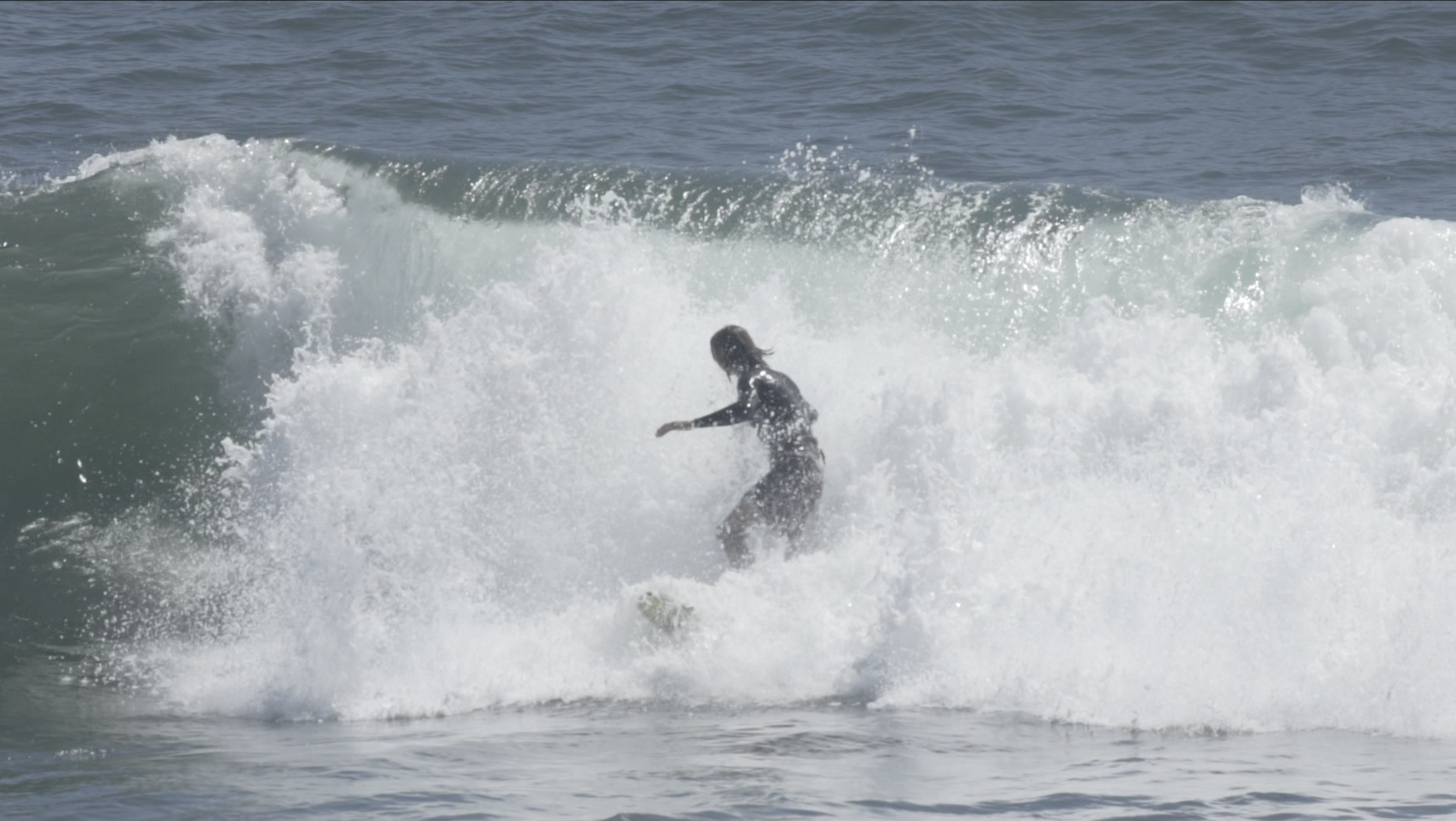
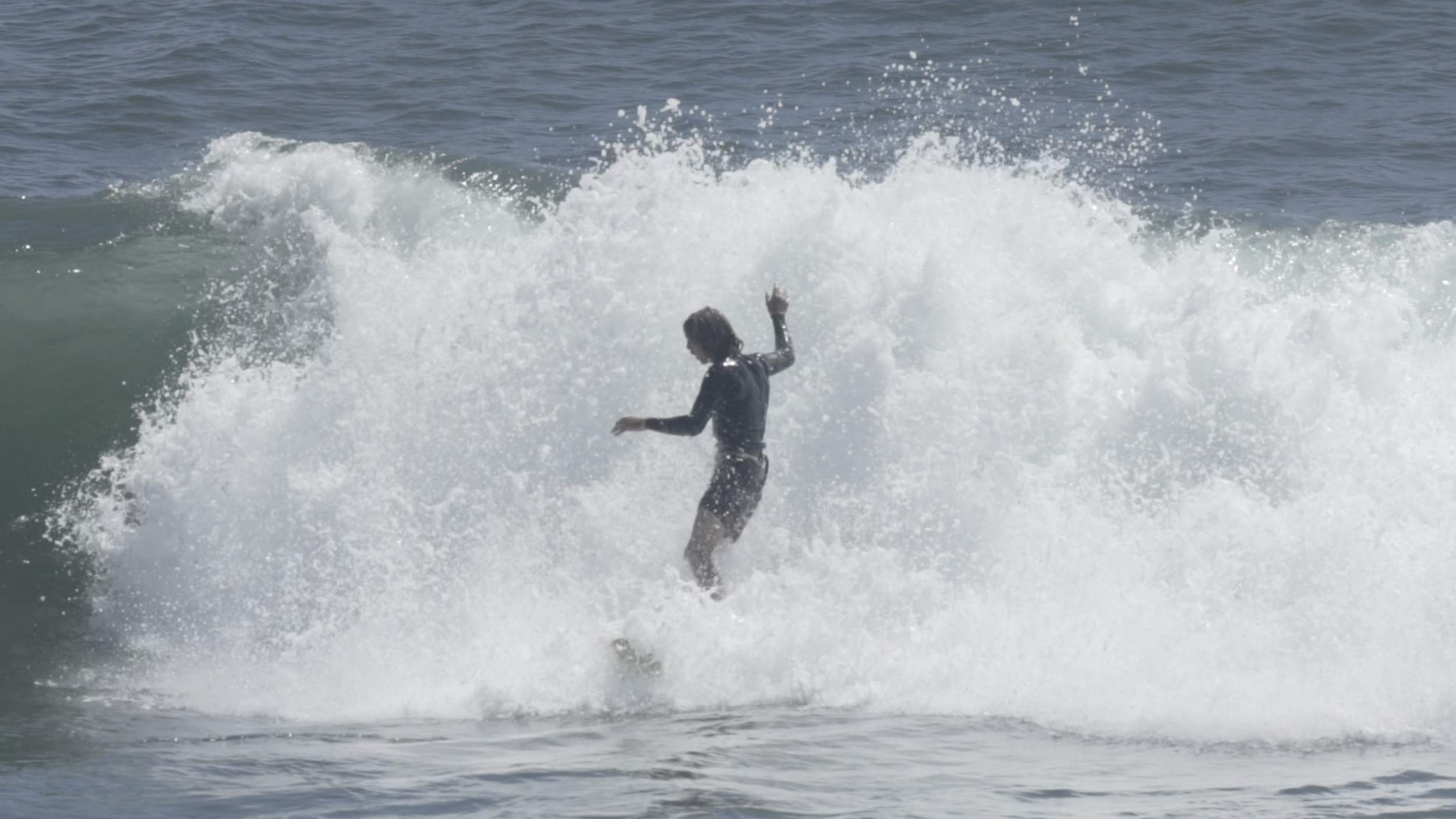









Minimal
This is a mini-mal I’ve been working on for the point waves of the north coast. 21’ 1/2” wide x 3” thick. The outline is inspired by traditional longboards and the guns of the 50’s and 60’s. It’s components; a roll bottom into spiral V, entry nose rocker is subtle and the tail rocker is cranked with a 90’s style exit out the tail. The Blank is a 8’7 Midget plug, and is glued with a 9mm T Band stringer. The deck is flat and has a 50/50 C rail. The board is refined for speed and has a tucked rail for manoeuvrability.




Pin Single Fin
This Single Fin, is based on the speed, stability and control of those in the late 70’s early 80’s. It is a performance single fin, and these designs are a progression of the Single fin knowledge stored in Australia. There is a difference between that of the boards in the U.S, Hawaii, South Africa. As there is different attributes to boards elsewhere. These boards are built to paddle well, withstand drops, plane across flats and turn in tight pockets. The deck; flat, carries volume throughout into the nose & has a slight s deck foil in the tail. The bottom; is flat into 2/3 of the board entering a panel vee exiting with a spiral vee out the tail.

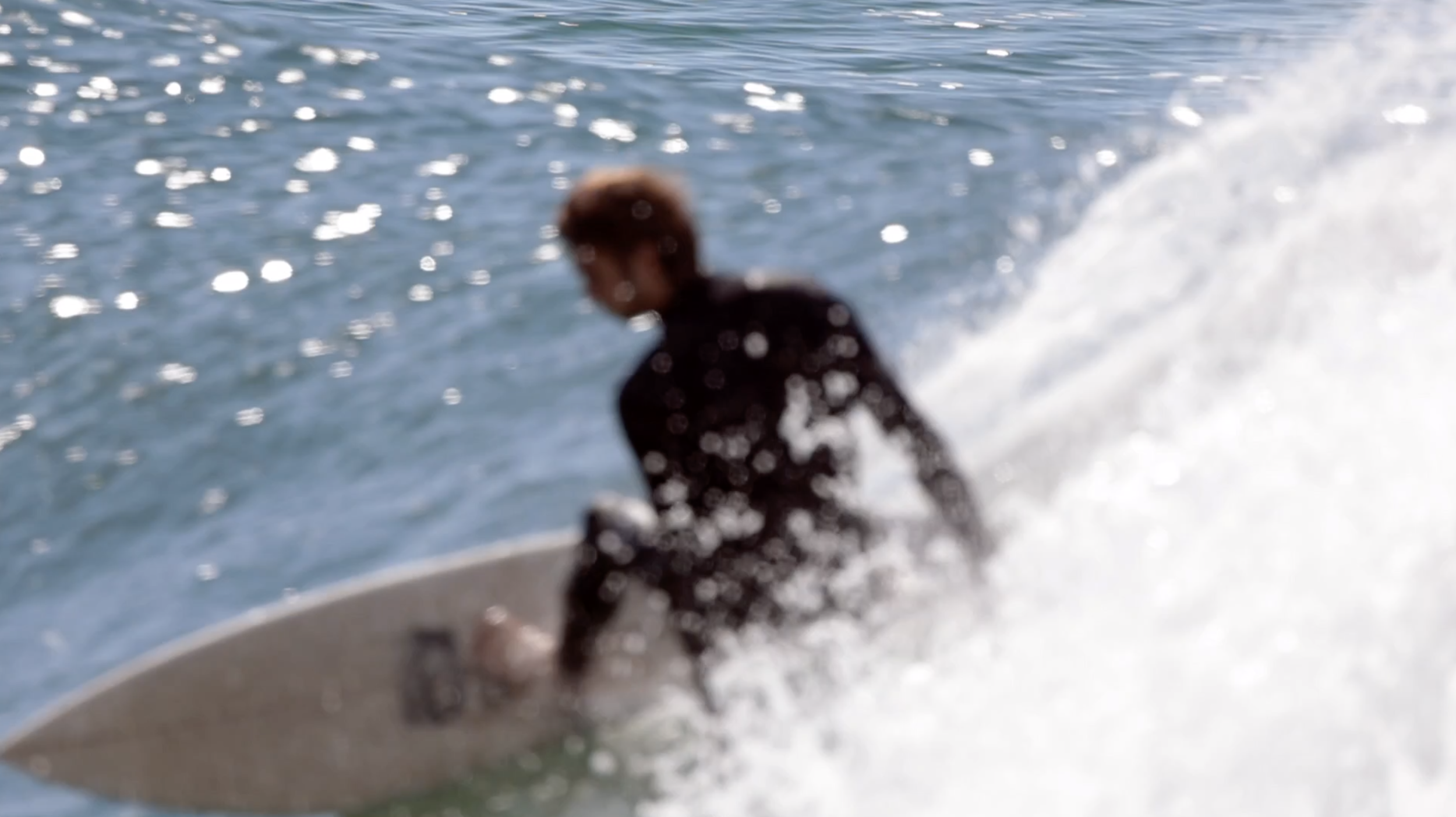

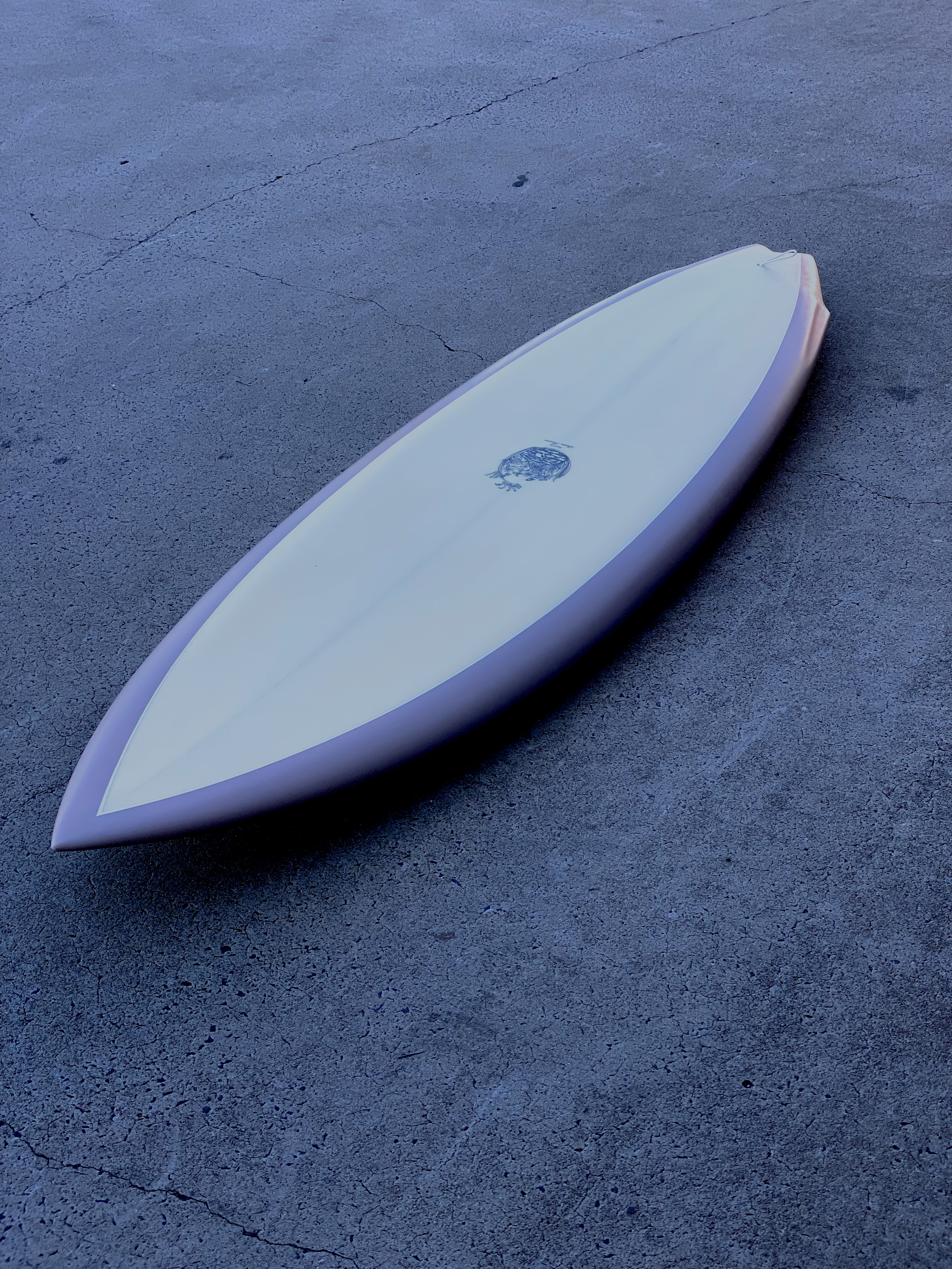

Progressive concepts, Hand Shaped, in Australia.


6’2” 19’5/8” 2’1/2”
CUSTOM ORDER; FOR DREW.
This board is a progressional thruster. It is built to harness speed and hold in waves of consequence. It features a flat entry into a deep-ish single concave with a flat exit out the tail. The outline is one that will ride in small waves as well as large, the tail pulled in and foiled finely to be manoeuvrable in the pocket.
The deck is semi rolled, and the rails down, with a hard tuck.
The rocker is curved throughout, with a steady entry into a gradual flip in the tail, it can fit into most any tight takeoffs.
The rocker, rails and bottom contours are in sync with the outline to offer long lines on any waves surface.
6’2 Roll Single Channel.
Parallel outline, made with intentions to carve with the wave. This design has been focused around contemporary thrusters and shortboard evolution single fins.
The concept is something I have worked on with Simon Anderson and developed the idea from roll bottom single fins and visions of Michael Peterson, Chris Brock/Wilderness-Bob Duncan Tri plane hulls. The plan shape, rockers and rails are in accord to my vision of the design.
7’7 Roll Single Channel. Experimental board, similar concept. Farrelly/ Peterson inspired planshape.
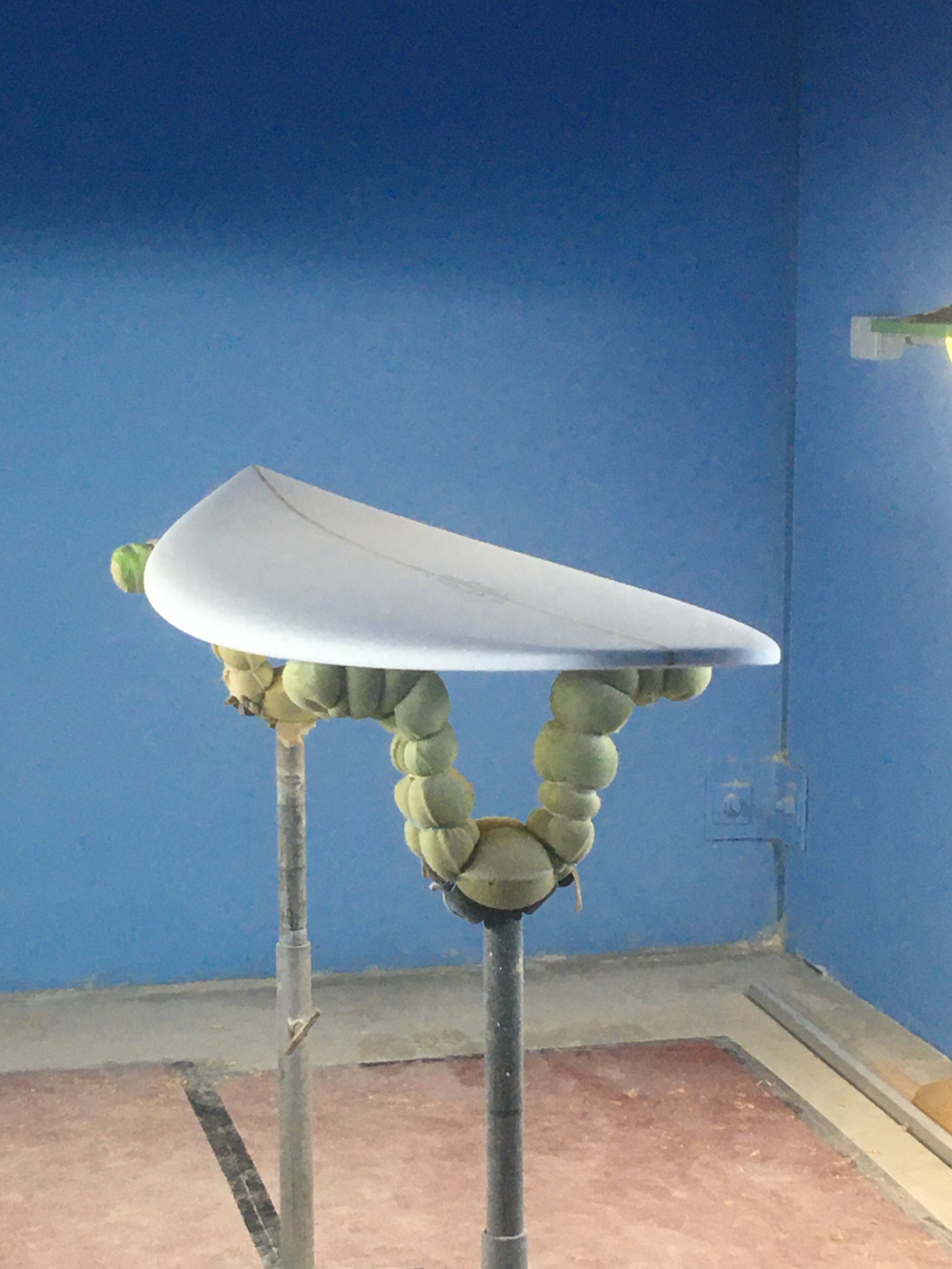

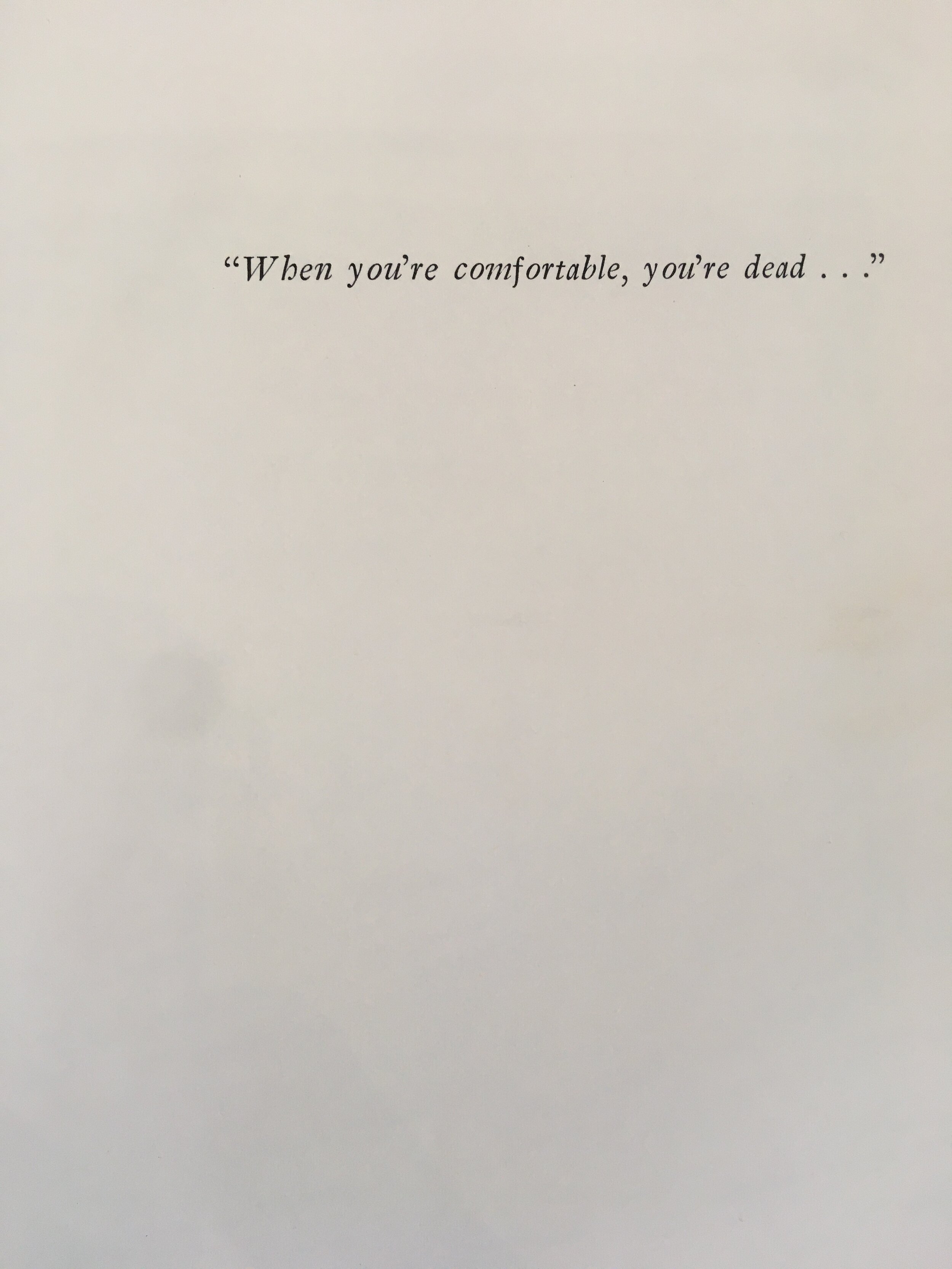

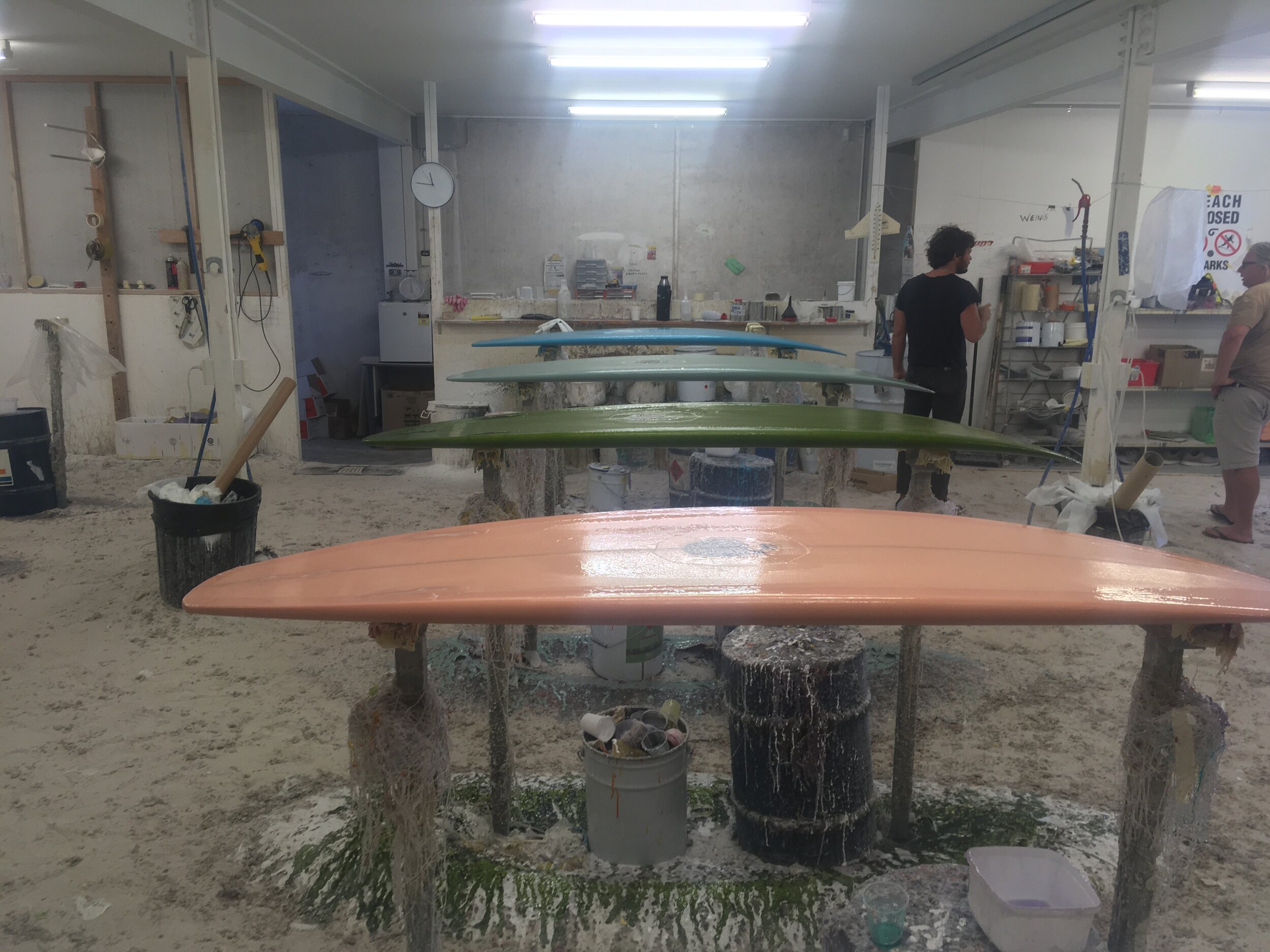

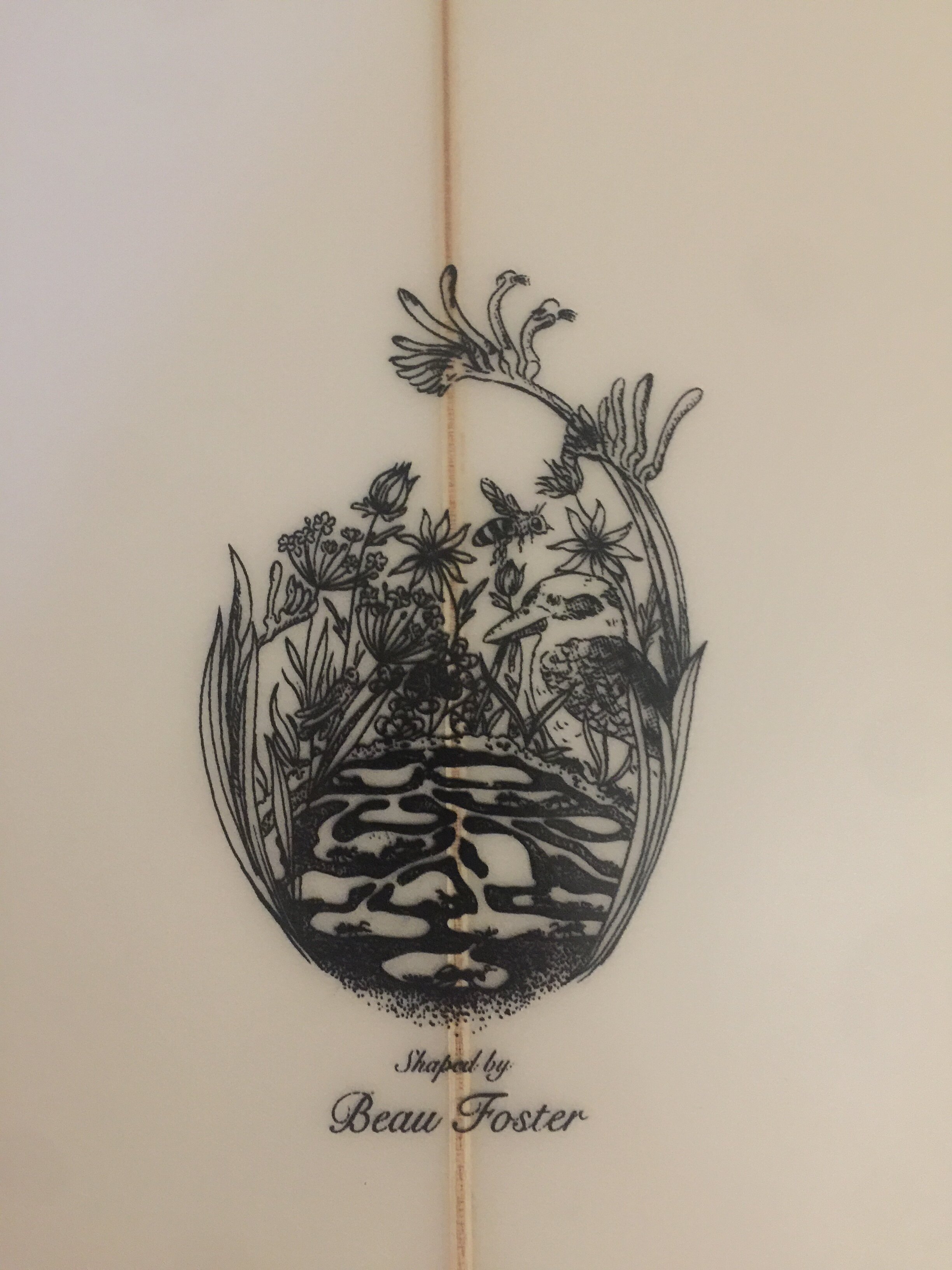
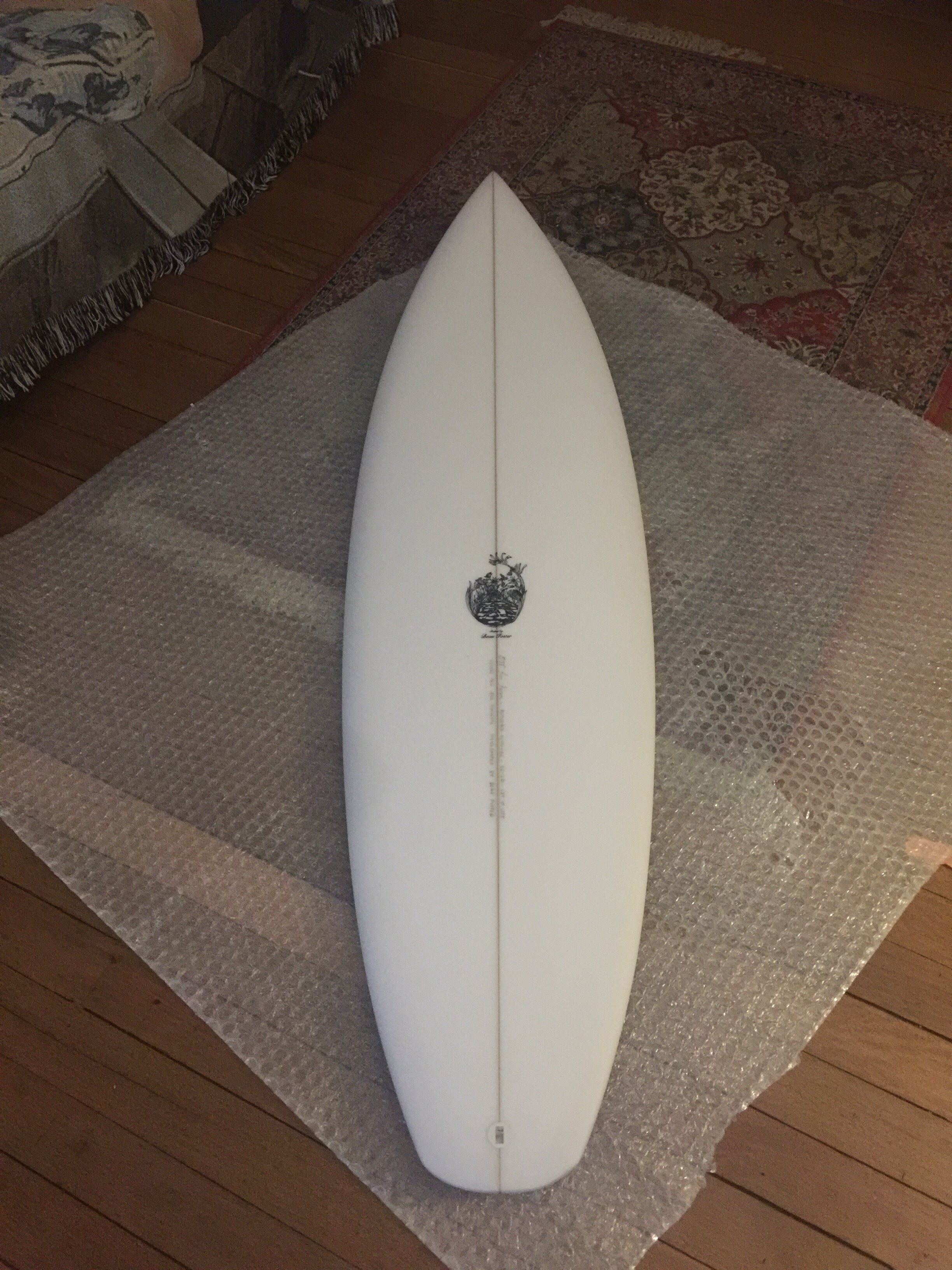

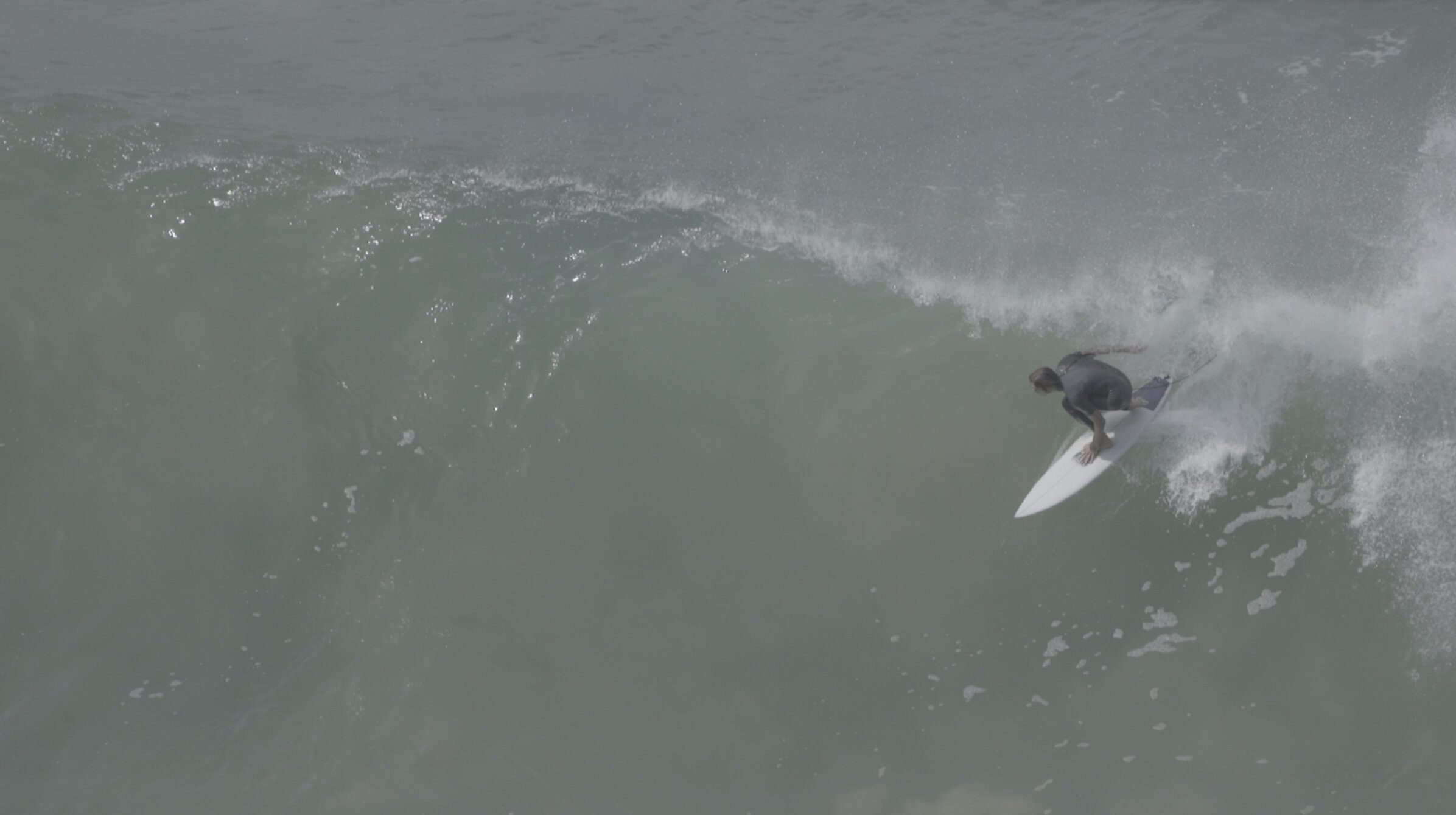


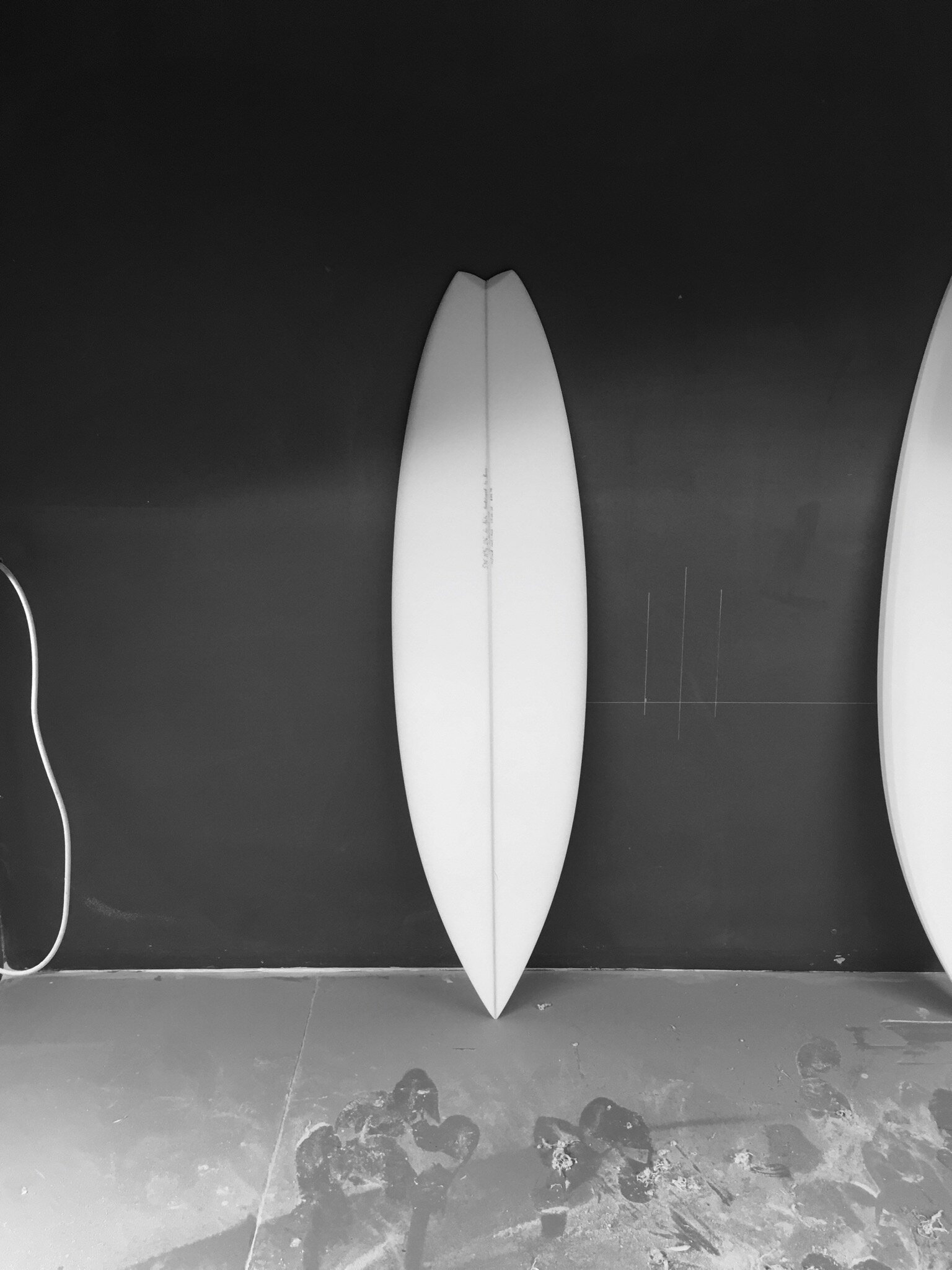
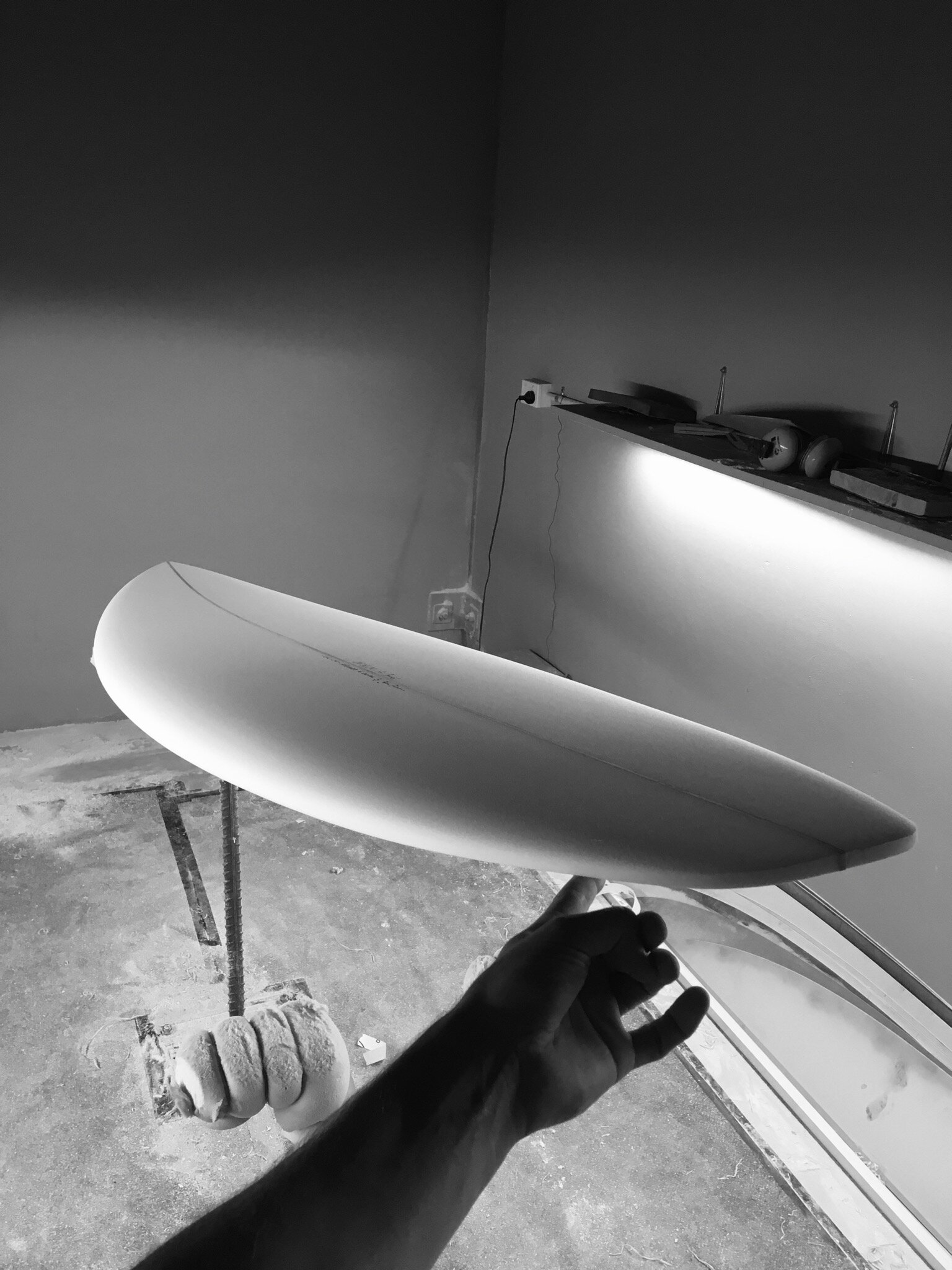
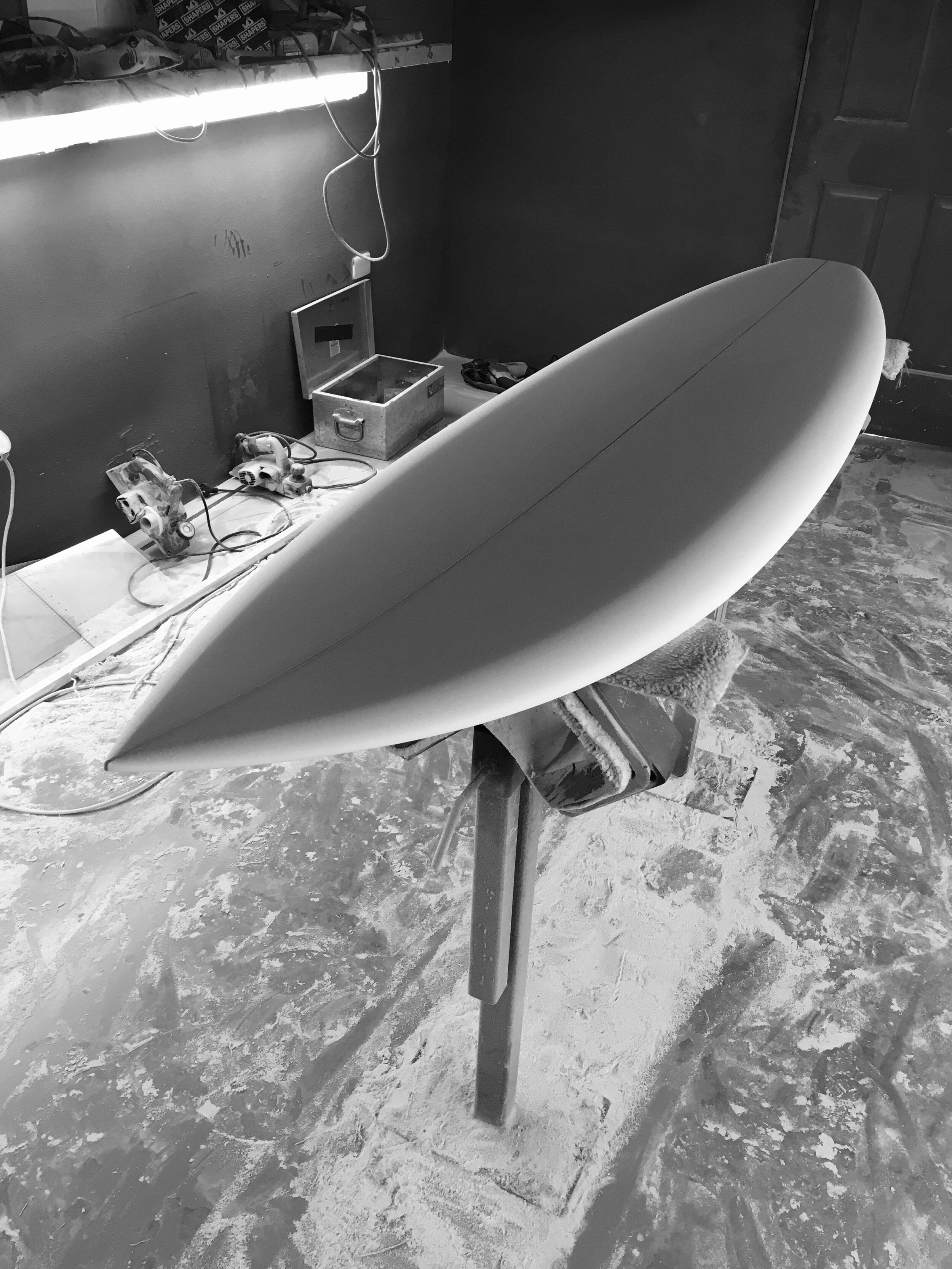


Glassing By Clegg
